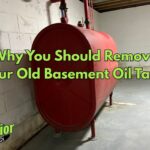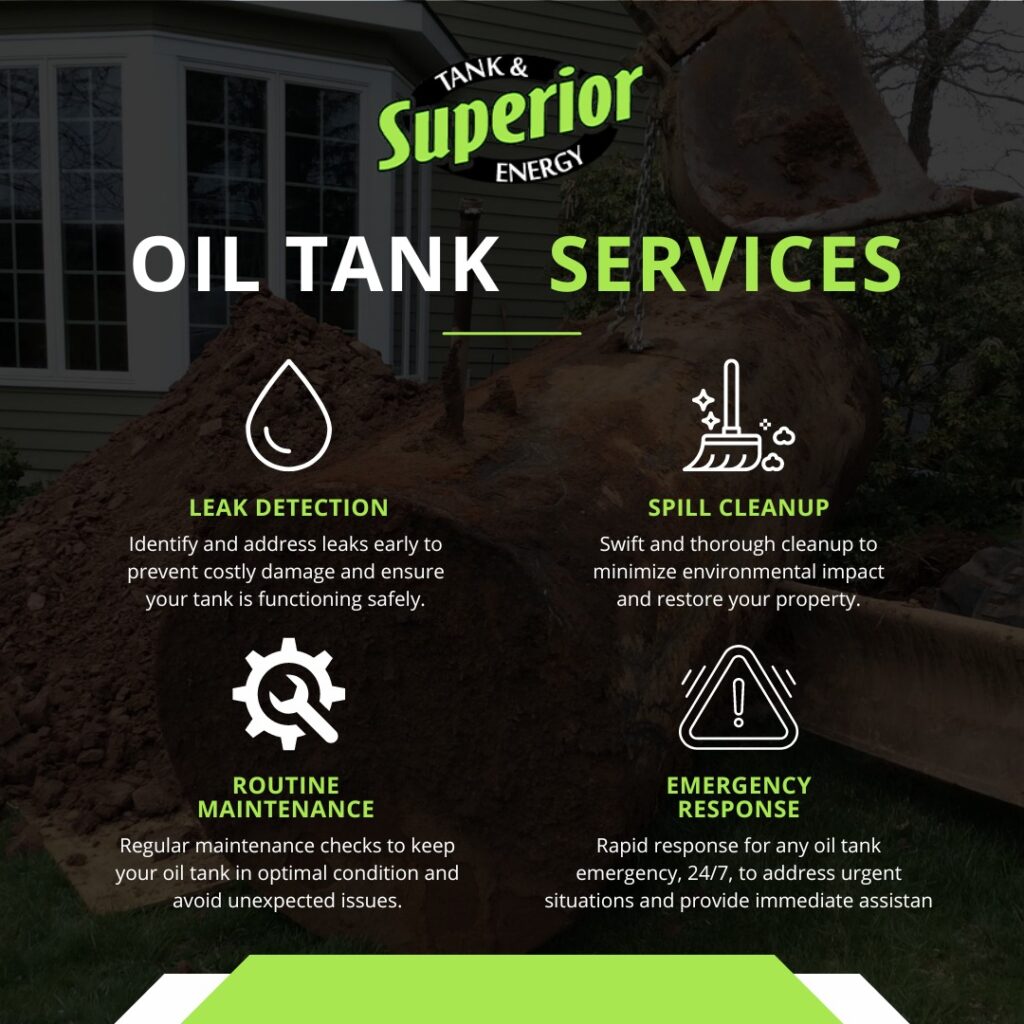
- Posted by: Superior
- 0 Comments
How to Remove an Old Oil Tank From Your Property
Tips for Removing an Old Oil Tank From Your Property
How is your home heated? Many Americans still rely on oil heat from oil storage tanks. There are two main kinds of heating oil storage tanks: aboveground oil tanks and underground oil tanks. Even though these storage tanks are made from powerful and durable metal, they don’t last forever. Like any HVAC unit, your oil tank requires eventual replacement.
Whether you’re trying to sell your home and want to get rid of your oil tank altogether, or you just want to ensure your tank can be removed for replacement, you might be wondering how to remove an old oil tank from your property. Our removal specialists have the process down to a science thanks to many years of oil tank removal in Philadelphia and the surrounding areas. Keep reading to learn more about how old oil tank removal works and what to expect.
Step 1: Assessing the Oil Tank
In order to assess the materials and cost to remove your old oil tank, professionals will start with a complete inspection. Wherever the tank is, it will be examined for damage, wear and tear, and any signs of trouble. The only way to ensure safe removal is to check the tank isn’t damaged to the point of leaking before proceeding, which is why the next step is…
Step 2: Preventing Leakage
The phrase “oil leak” may bring to mind the catastrophic ocean spills that have affected the environment over the past few decades. While a home fuel oil leak results in much less oil being spilled, oil tank leaks still pose huge environmental hazards. You also won’t be happy when you get the bill for your negligence — if the tank is not properly closed or has puncture damage you were unaware of, you could be fined thousands for harming your local waterways and plant life. This is why it’s so important to hire professionals to remove an old oil tank from your property. During leakage prevention, technicians might find alternative ways to drain the oil from the tank or patch holes so that the tank can be taken away without leaking oil in its wake.
Step 3: Emptying the Oil Tank
Next, oil tank removal specialists will remove the oil from your old oil tank using a transfer pump. Even if you think the tank is empty, they will make absolutely sure there is nothing left inside, especially at the bottom of the tank, where leftover sludge and debris can lurk long after the tank is abandoned. This step is especially important in the case of buried oil tanks since a potential buyer may be shocked to discover an underground oil tank still half-full on their new property long after they’ve signed on the dotted line. Before you sell your home, definitely contact oil tank emptying services.
Step 4: Removing the Oil Tank
Whichever kind of oil tank your oil heating system uses, technicians will carefully remove the tank from its location and place it onto a special truck. More than anything else on this list, the physical removal of the tank should always be left to the pros. Oil tanks are heavy; some models weigh thousands of pounds. Oil is also toxic in large quantities without the proper personal protective equipment. In some states, you even need a construction permit if you want to remove your tank yourself.
Step 5: New Oil Tank Installation
Once technicians remove an old oil tank from your property, you’ll be ready to have a new tank installed. Oil heat is a reliable and affordable way to keep your home comfortable, so a new tank may well be worth the money compared to a whole new home heating system! If you’re not interested in a new tank, technicians will fill in the hole or clean up whatever was left behind and be on their way.
Get in Touch With Our Philadelphia Oil Tank Specialists
When you need oil tank service in or around Philadelphia, PA, call on Superior Tank & Energy to ensure fast, efficient, and professional oil tank repair, removal, or replacement. Our highly qualified team is ready to complete any size job from big to small, and we have years of industry experience speaking to the quality of our work. Get in touch with us today!
Categories
Recent Post
Archives
- December 2025
- November 2025
- October 2025
- September 2025
- May 2025
- April 2025
- March 2025
- February 2025
- January 2025
- September 2024
- September 2023
- July 2023
- May 2023
- March 2023
- January 2023
- November 2022
- July 2022
- May 2022
- March 2022
- January 2022
- November 2021
- September 2021
- July 2021
- April 2021
- December 2019






Recent Comments